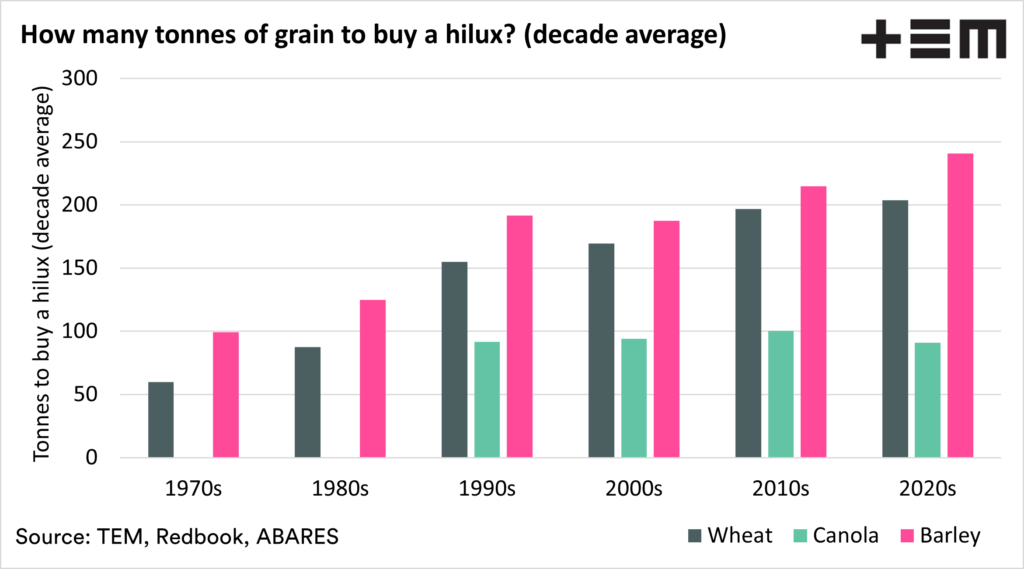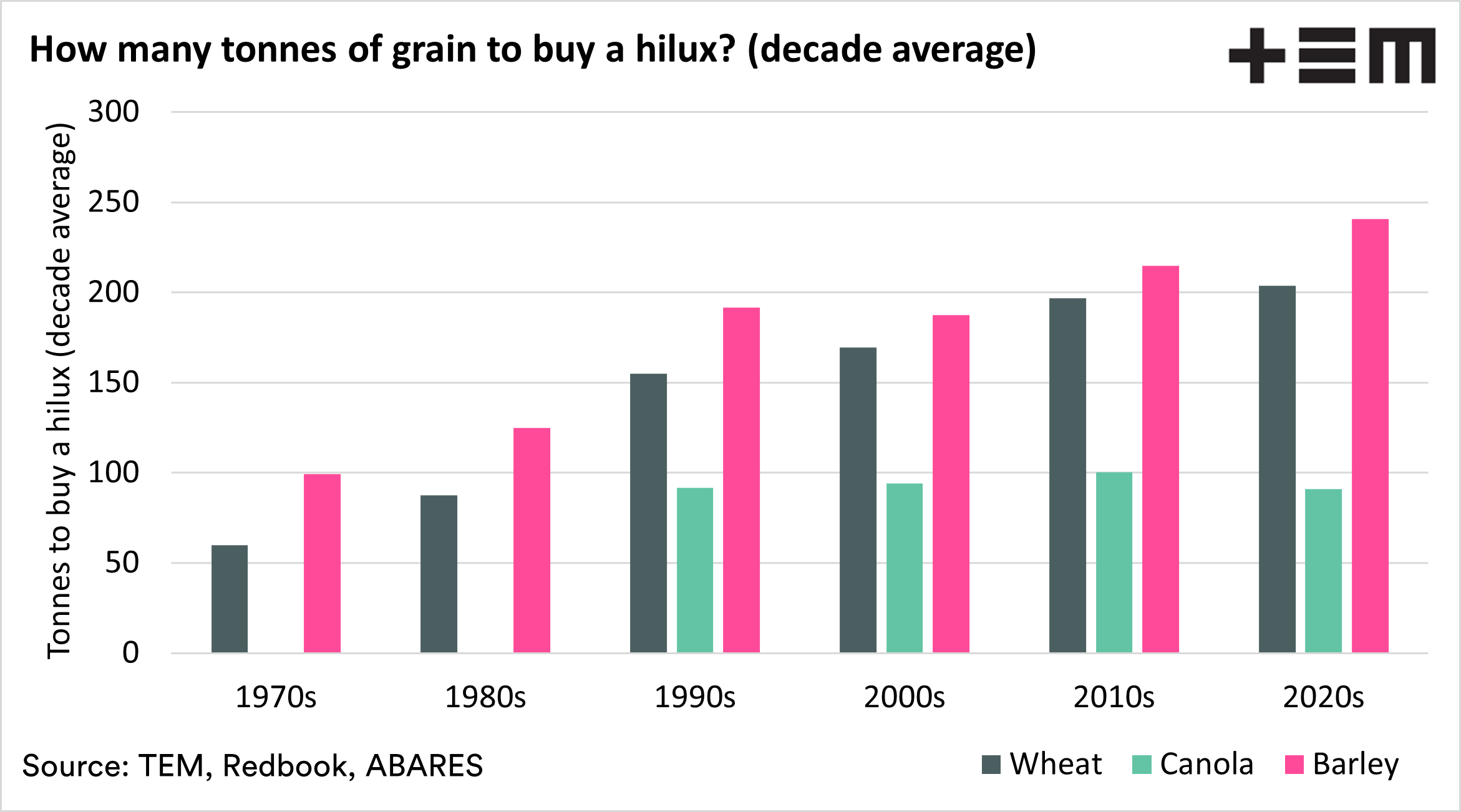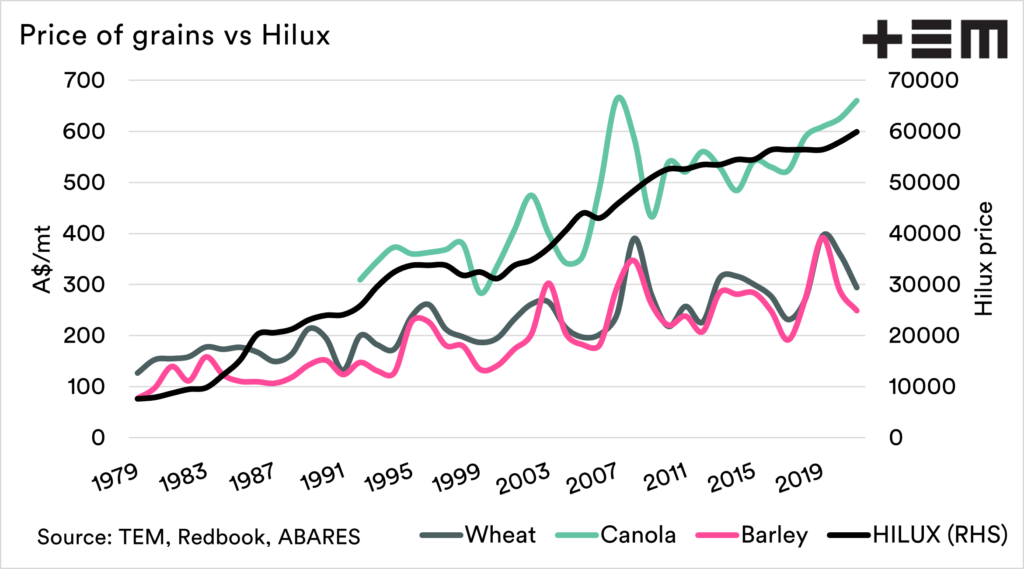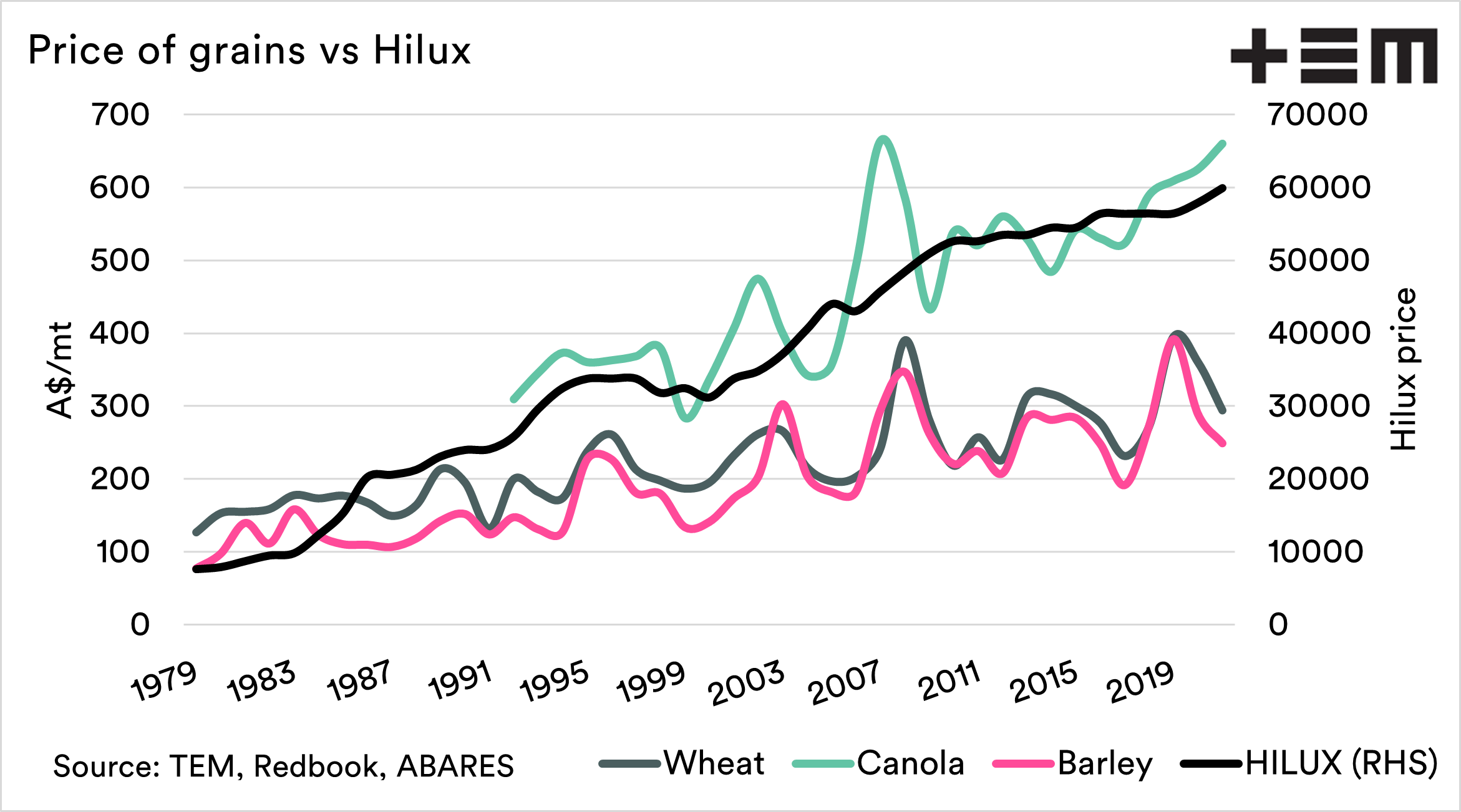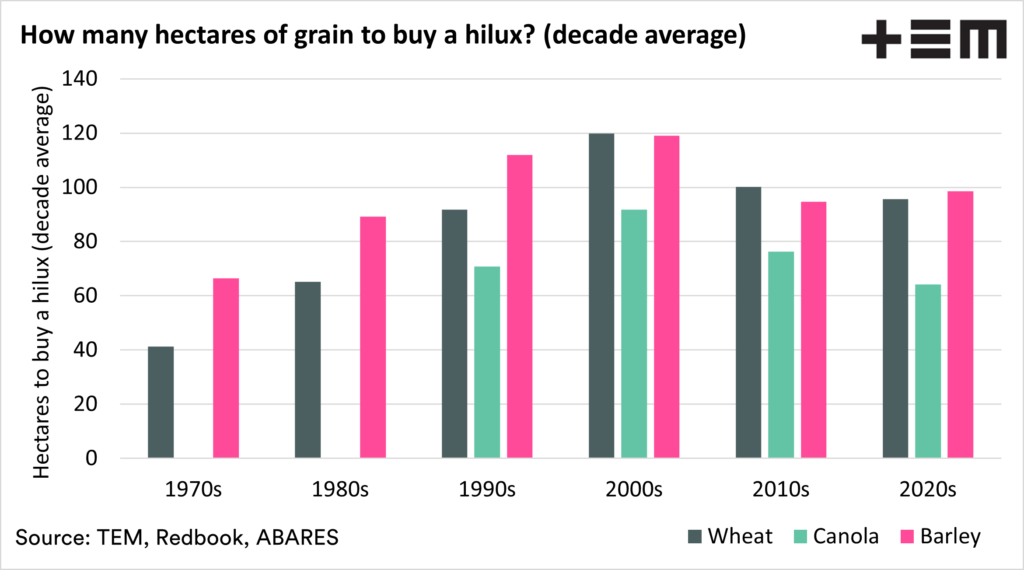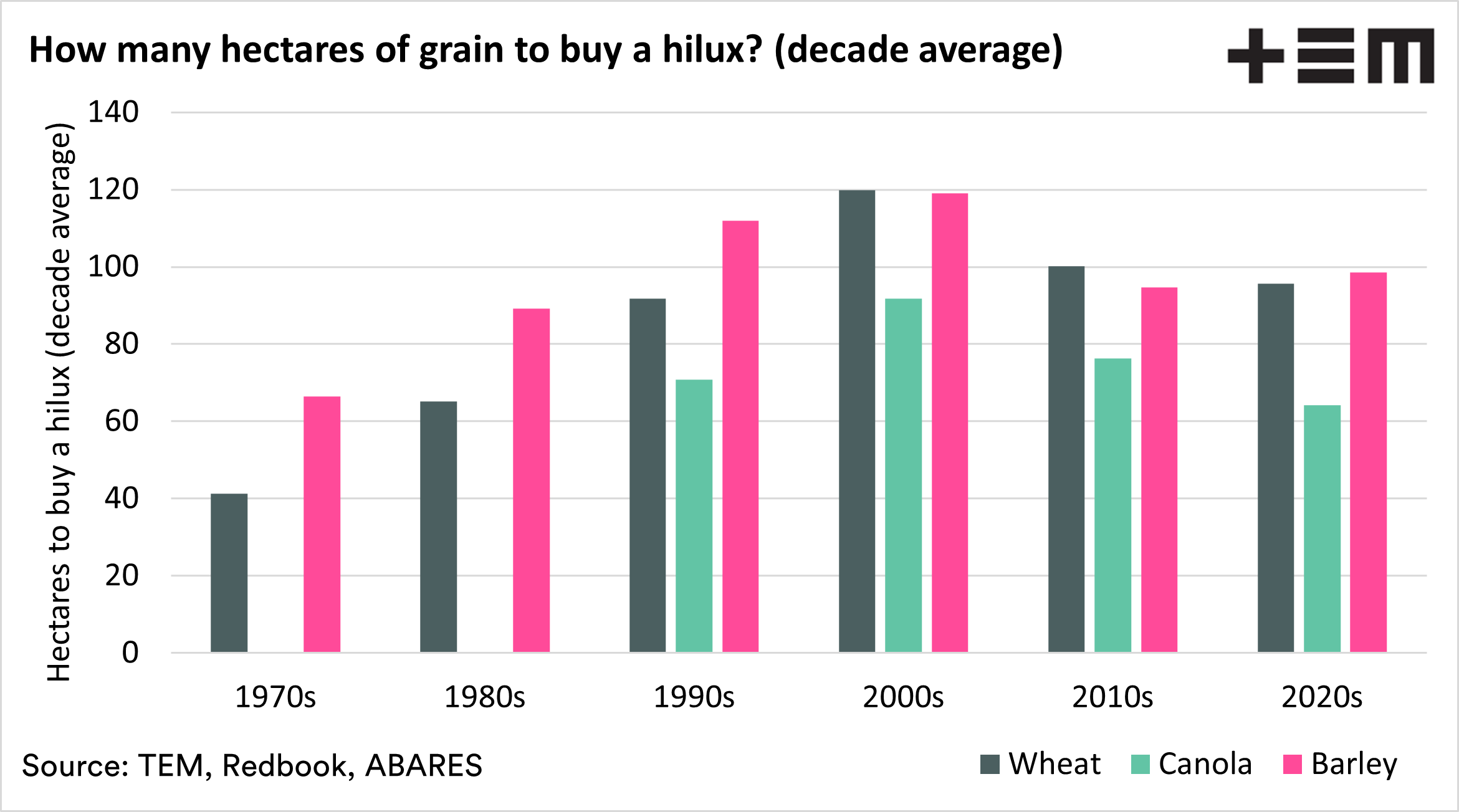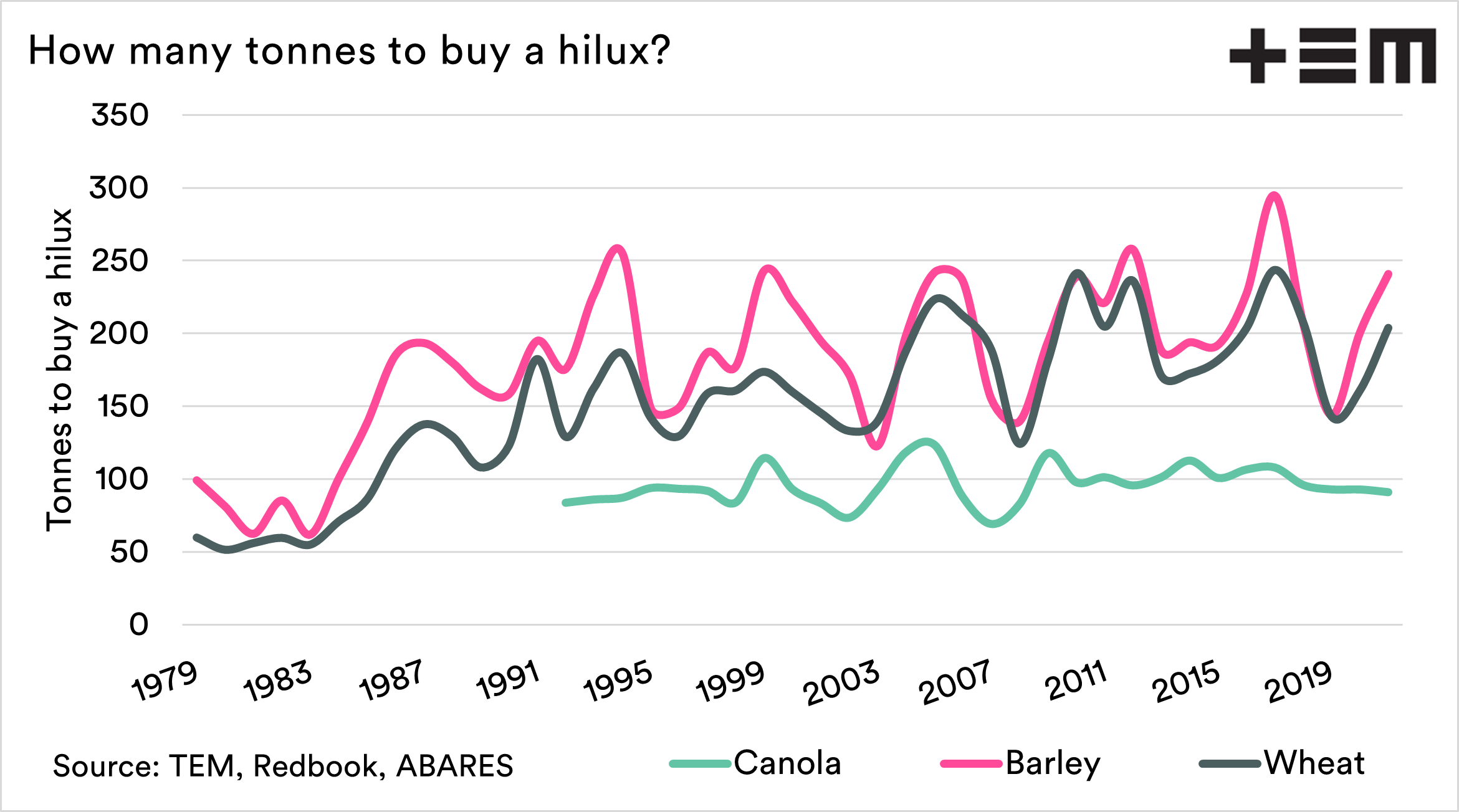The Hilux Index: Comparing pricing
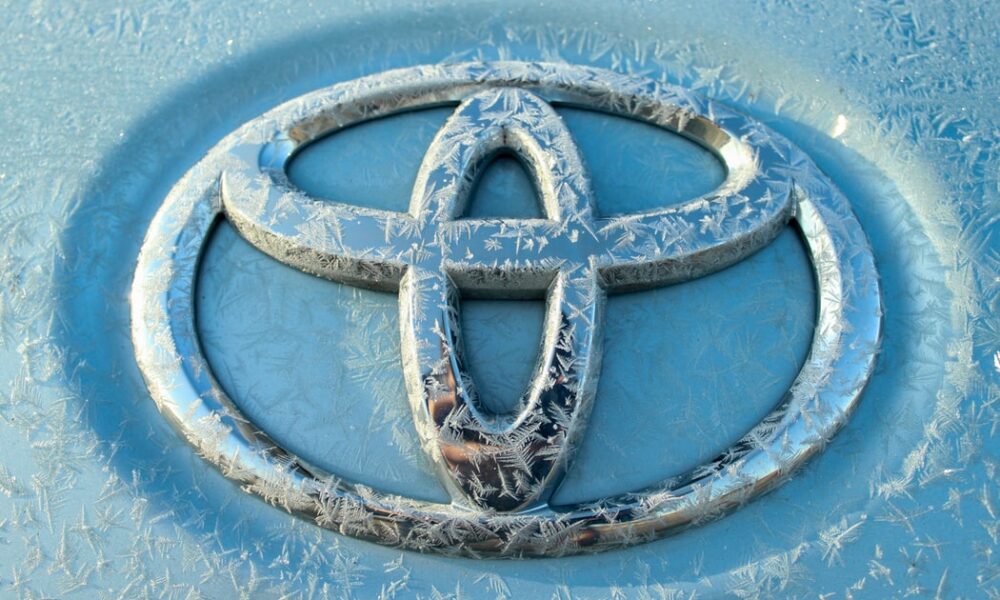
The Snapshot
- The cost of a Hilux has increased since the 1970s. Pricing of wheat and barley haven’t kept the same pace.
- In the 1980’s you had to sell 87mt of wheat or 125mt of barley to purchase a hilux.
- In the 2010’s you had to sell 204mt of wheat, 100mt of canola or 215mt of barley.
- The amount of canola hasn’t really changed much from 92mt in the 1990’s.
- Productivity, to an extent, has kept up
The Detail
EP3 is now officially one year old. It’s been a great year, where we have produced a lot of independent information on the market. We appreciate all the support that we have received from farmers and industry in this time.
Anyone who knows Matt or I, will see that we love nothing better than playing around with data. It’s pretty sad, but it is less of a job and more of a hobby for us, as we sit up at night talking about what we could put together. We thought it was time for a novelty analysis.
One of the questions we have regularly had over the years:
It’s been one that we have always wanted to look at but never got to it.
So let’s look into how much grain you need to sell to buy 1 Hilux. We chose the Hilux as it is a good quality farm ute which has been sold for a long time in Australia and will continue being so. Sorry commodore fans.
How many tonnes to buy a Hilux?
We gathered the price per year of a suitable Hilux from each year since 1979 to the present day, along with the annual average price for wheat, barley and canola.
Grains have generally not kept pace with inflation, but everything else around us tends to increase in price. The Hilux is no exception (even before the COVID tax).
If you were selling wheat or barley to purchase a Hilux in the 1980’s you’d have a new Hilux after selling 87mt of wheat, and 99mt of barley. In the 2010’s you’d need to sell 197mt and 215mt!
The story isn’t quite the same with canola; the average decade range has been 91-100mt required to buy a Hilux
The chart above displayed the decade average, but the chart below shows the annual average prices. As we can see, the canola and Hilux pricing has increased at a much greater pace than that of wheat or barley.
Remember, the pricing in these charts is nominal, meaning they are the prices on the day and do not consider inflation.
One of the reasons that the pricing of wheat and barley have only had ground slowly higher over the decades is a result of productivity. As an analyst, it’s our job to look into the fundamental questions and delve in a little further. So what is the number of hectares required to purchase a Hilux?
So we gather the annual average Australian yield for each commodity and then calculated how many hectares would be required to purchase a Hilux.
This changes the story quite a bit. It was the best time to buy a Hilux in the early decades, but the range since the 1990s hasn’t been that large in terms of the number of hectares needing harvesting.
What does this analysis tell us?
Firstly, that Matt and I need a better hobby and/or a social life. In reality, though, it does show the effect (or lack of) of inflation on pricing.
The price of a Hilux has gradually increased in price. However, commodity pricing hasn’t risen at the same pace. The compound annual growth rate of a Hilux has been 5%, whereas the wheat has been 2% and barley 3%.
My next question for the industry and the agronomists out there is – can productivity keep pace with the costs in the rest of the world?

